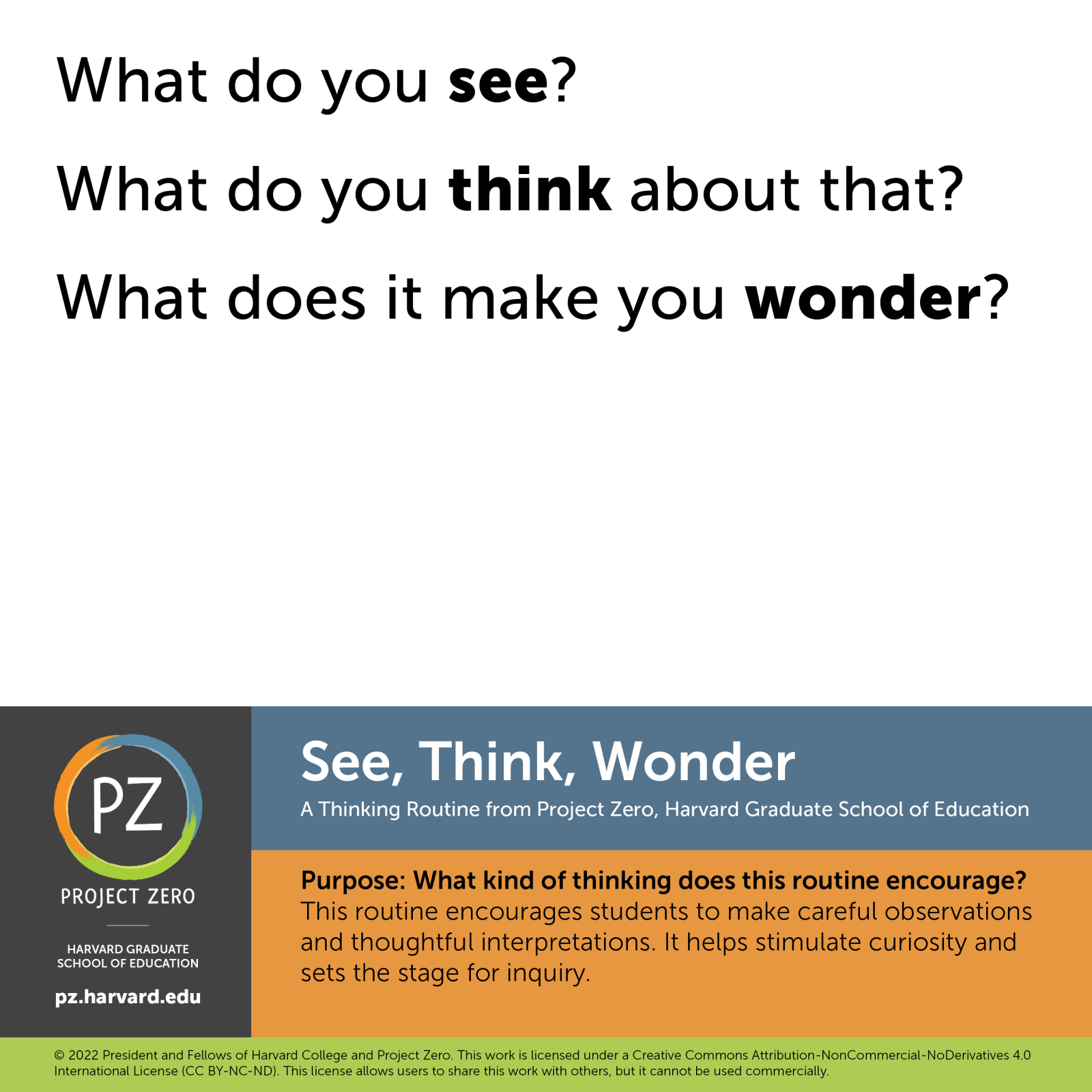Darlene Smith's collections
Student Version of Prehistoric Climate Change and Why It Matters Today
<p>In a lesson in this issue of <i>Smithsonian in Your Classroom, s</i>tudents do the work of a team of paleontologists studying a time of rising carbon dioxide and rapid global warming during the Eocene epoch. By examining fossils of tree leaves, and then incorporating the findings into a mathematical formula, they are able to tell average annual temperatures 55 million years ago. Really!</p><p>Click the PDF icons to download the issue and additional materials.</p>
 Darlene Smith
Darlene Smith
7
Animal Adaptations
<p><strong>Generative Topic</strong>: Animal Adaptations</p>
<p><strong>Essential Questions: </strong> </p>
<p>How do organisms live, grow, respond to their environment and reproduce? </p>
<p>How and why do organisms interact with their environment and what are the effects of these interactions? </p>
<p>How can there be so many similarities among organisms yet so many different kinds of plants, animals, and microorganisms? </p>
<p>What are the roles of organisms in a food chain? </p>
<p>How do the structures and functions of living things allow them to meet their needs?</p>
<p>What are characteristics that allow populations of
animals to survive in an environment?</p>
<p>How does the variation among individuals affect their survival?<br /></p>
<p><strong>Understanding Moves:</strong> Describe What's There, Uncovering Complexity, Reason with Evidence</p>
<p><strong>Thinking Moves: </strong>See Think Wonder, Parts Purposes Complexities</p>
<p><strong>Lesson Focus: </strong> </p>
<p>Students will investigate that animals have both internal and external structures that serve various functions in growth, survival, behavior, and reproduction and will engage in engineering and design. Students build a model and use their understanding of how animals are adapted to survive in a particular environment.</p>
<p><strong>Prior Learnings/Connection:</strong></p>
<p>Students have prior knowledge about ecosystems, animal classifications, basic adaptations such as means of obtaining diet, protection, and movement.</p>
<p>
</p>
<p><strong>Understandings:</strong></p>
<p>Organisms interact in feeding relationships in ecosystems.</p>
<p>Organisms may compete for resources in an ecosystem.</p>
<p>For any particular environment, some kinds of organisms survive well, some survive less well, and some cannot survive at all.<br /></p>
<p>Populations live in a variety of habitats, and change in those habitats affects the organisms living there.<br /></p>
<p>Other characteristics result from individuals’ interactions with the environment. Many characteristics involve both inheritance and environment.<br /></p>
<p>Many characteristics of organisms are inherited from their parents.</p>
<p>When the environment changes in ways that affect a place’s physical characteristics, temperature, or availability of resources, some organisms survive and reproduce, others move to new locations, yet others move into the transformed environment, and some die.<br /></p>
<p>Populations live in a variety of habitats, and change in those habitats affects the organisms living there.<br /></p>
<p>Aquisition of Knowledge and Skill<br /></p>
<p>Knowledge:</p>
<p>Producers (plants, algae, phytoplankton) make their own food, which is also used by animals (consumers).<br /></p>
<p>Decomposers eat dead plant and animal materials and recycle the nutrients in the system.</p>
<p>Adaptations are structures and behaviors of an organism that help it survive and reproduce. </p>
<p>Organisms are related in feeding relationships called food chains. Animals eat plants, and other animals eat those animals.<br /></p>
<p>Skills:</p>
<p>Make observations to produce data to serve as the basis for evidence for an explanation of a phenomenon or test a design solution.</p>
<p>Use evidence (e.g. measurements, observations, patterns) to construct an explanation.</p>
<p>Identify the cause and effect relationships that are routinely identified and used to explain change.</p>
<p>Observe and identify structures and behaviors that help an animal survive in its environment.</p>
<p>Present results of their investigations in an organized manner.<br /></p>
<p>Make a claim and supporting it with evidence.<br /></p>
<p>Synthesize information from more than one source.<br /></p>
<p>Assessment Evidence:</p>
<p>Performance Task: </p>
<p>This collaborative project gives students the opportunity to take part in the systematic practice of engineering and design to achieve solutions to problems. During a life science unit, fourth grade students learn that for any particular environment, some kinds of organisms survive well, some survive less well, and some cannot survive at all. Students then apply these core scientific ideas to demonstrate understanding as they design, test, and refine an animal that is well suited to survive in its environment. By integrating content with practice, students are better able to make sense of science.<br /></p>
<p>Presentation:</p>
<p>Students will create a presentation in which they showcase their Animal design and explain how it is well adapted to survive in its environment.</p>
<p>Learning Activities:</p>
<p>During See Think Wonder students engage in observation of animals as the foundation for greater insight into structure and function. Students first look closely at an animal to fully observe and notice before interpreting. Then students can begin to make interpretations based on their observations. Students use Smithsonian Collection resources, such as videos, 3D models with pins/annotations, articles to further explore blue crab structures and behaviors and how they help the animal survive in its environment. Students then use Parts Purposes Complexities routine to develop understanding of the concept of adaptation - a structure or behavior that improves an organism's chance of survival. Students study the blue crab environment and as they consider how people changing the crabs' environment have affected the blue crab population. To assess understanding, students complete the Animal Adaptations design challenge.</p><p>#PZPGH</p>
 Darlene Smith
Darlene Smith
15
New Student Copy of Forgotten Elephants of Deep Time with Paleobiologist Advait Jukar
<p>Program Details<br /></p>
<ul><li>December 12, 2019</li><li>Shows are ~45 minutes long and stream at 11am and 2pm ET</li><li>The program is free, but registration is requested. </li></ul><p><strong>Overview</strong></p>
<p>The earliest elephant relatives originated in Africa about 60 million years ago and dispersed to every continent on earth, except Antarctica and Australia. There are about 165 known elephant species from the fossil record, and scientists estimate that there would have been many more that we haven't found yet, over the whole history of this special group, called a clade. In Earth’s more recent history, between 50,000 and 40,000 years ago, there were 16 species of elephants and their relatives living at the same time around the world, including at least 7 in the United States. Today, there are only three species of elephants that remain: the African savannah elephant (Loxodonta africana), the African forest elephant (Loxodonta cyclotis), and the Asian elephant (Elephas maximus). Populations of all three species are declining, with Asian elephants at a much higher risk of extinction. </p>
<p>Today’s elephants are part of the order Proboscidea which consists of modern elephants and their extinct relatives such as mastodons, mammoths, and gomphotheres. All of the animals in this group have a proboscis, or trunk, that they use to eat and drink. While today there are only two surviving elephant genera, the African and Asian elephant, their evolutionary history is much more diverse.<br /></p>
<p>Paleontologists use fossil elephant teeth to understand the animal’s diet and feeding behavior. There are two main types of teeth: high crowned and low-crowned teeth.<br /></p>
<ul><li><span></span><strong>High-Crowned Teeth: </strong>Animals that consume tougher, more abrasive foods are likely to wear down their teeth over time, and thus have evolved to have higher-crowned teeth as a result. These animals typically have an herbivorous <strong>grazing</strong> diet; they graze grasses.
</li><li><span></span><strong>Low-Crowned Teeth: </strong>Animals that eat softer food have less wear, and therefore have low-crowned teeth. These animals typically have an herbivorous <strong>browsing </strong>diet; they browse branches, eating soft leaves.
</li></ul><p></p>
 Darlene Smith
Darlene Smith
3




